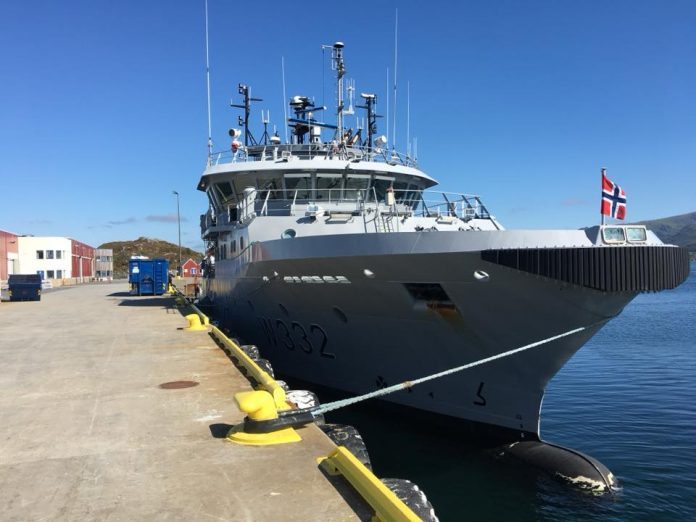The Norwegian coast guard vessel KV “Heimdal” will be equipped with a mobile lab, which will help to get an early overview of the development and proliferation of algal blooms in Northern Norway.
“The vessel “Heimdal” is waiting outside Bodø Harbor (Northern Norway) for a person who will arrive from SINTEF (independent research organisation), and help analyze samples on board,” said Regional Director, Janne Andersen, in the Norwegian Directorate of Fisheries to SalmonBusiness.
Tuesday evening the Norwegian Directorate of Fisheries had a meeting with The Norwegian Seafood Federation and the Norwegian Coast Guard.
Time-saving
The Coast Guard vessel will move closer to the areas affected by the algae during Wednesday, and with use of a small workboat, samples will be collected and brought back to the Coast Guard vessel.
“It will be good. It is the salmon farmers themselves who have taken the initiative to this,” said Andersen, adding that the goal is to get an early overview of the development and proliferation of algae blooms.
“Thus, we can perform the analyzes of the samples as early as possible. We, therefore, do not need to spend time transporting these samples to Trondheim,” said Andersen.
So far figures show over 10,000 tonnes of farmed salmon have died as a result of the algae bloom in northern parts of Norway.
“We will have a new status meeting at 12. We fear that the algae have spread further. Something happens all the time,” said Andersen.
“Tragic”
SalmonBusiness has also talked to CEO of The Norwegian Seafood Federation, Geir Ove Ystmark.
“There has been a desire from the salmon industry to get faster analyzes and presence with a laboratory, so that the analyzes can be carried out in the field, and must not be transported,” said Ystmark.
He said The Norwegian Seafood Federation has planned a meeting with salmon farmers next week.
“We will look at improvements we can make in connection with emergency preparedness.”
So far, The Norwegian Seafood Federation has assisted the salmon farmers in, among other things, dealing with media.
“It is primarily the industry itself that handles the situation. It is a tragic case for both the fish who are now dying, and it is a tough situation for the employees who are working with this,” said Ystmark.
Ystmark warns against the long-term effects of the algae attack.
“We must be prepared for consequences for both salmon farmers and others involved in the industry in the future,” he concluded.

